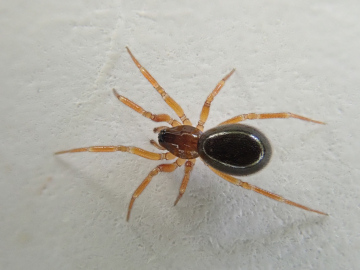Summary for Walckenaeria monoceros (Araneae)
previous species | next species
National Distribution
Terms of Use. Double-click on map to go to region

Explore Regional Distribution
Please log on and add a note on this species
About this species
Recorded altitude range0m to 670m
Species text
DistributionThe species has a widespread but patchy distribution in Britain. A European species widespread in north-western and central Europe.
Habitat and ecology
The spider occurs under stones and detritus, on sand-hills and open habitats inland. It has been identified as a pioneer species on burnt heathland, reaching a peak of abundance just a few years after burning but followed by a rapid decline in numbers (Merrett 1976). On heathland the period of male activity was from December through to March while females were probably active throughout the year (Merrett 1969).
Status
An infrequent species that has shown an apparently steep decline in the past 20 years. Trend analysis of the continuing decline in area of occupancy over the period 1976 to 2005 indicates a reduction in population size of 50% over a ten year period. The spider has never been very numerous on heathland, and has lost ground throughout its range from the north of Scotland southwards.
Threats
The loss of heathland to forestry and building may have been one cause of its recent decline as could lack of management of heathland to maintain early successional stages.
Management and conservation
Ensure remaining heathland areas are conserved and managed to maintain all stages in the successional cycle of heather growth.
Text based on Dawson, I.K., Harvey, P.R., Merrett, P. & Russell-Smith, A.R. (in prep.). References
Adult Season
Habitats
background methodology
Recorded management for locations with Walckenaeria monoceros
Recorded substrate and hydrology for locations with Walckenaeria monoceros
Images
please log on and upload a new image for this speciesSee also A-Z Species Index - A-Z Picture Index - previous species | next species
